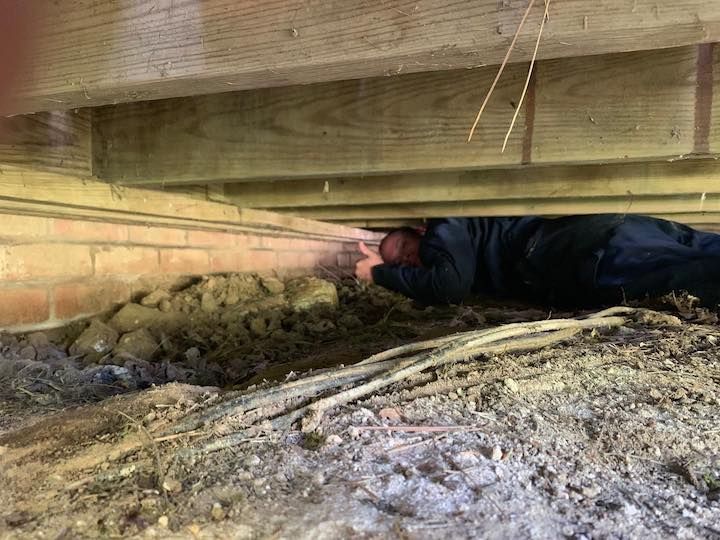Transform Your Space with Expert Solutions
Rely on us for Crawlspace Services in the North and South Carolina area
Looking for reliable pest control? Check out our sister company, Freedom Pest Services
Your Partner in Home Protection
Trust our dedicated team to deliver
GET IN TOUCH
Contact Us
We will get back to you as soon as possible.
Please try again later.
Revamp Your Crawlspace for Comfort
Enhance Your Home with Crawlspace Services in the Charlotte area
Freedom Crawlspace Services has proudly protected homes and businesses since 2017 with our dependable and proven crawlspace solutions tailored to meet diverse needs. In tandem with our crawlspace services, Freedom Pest Services has also offered trusted pest control protection since the same year. Together, our two divisions provide comprehensive solutions for both crawlspace issues and pest control, ensuring that your property remains safe, secure, and pest-free. Our dedicated management team and skilled field employees have collaborated closely for over a decade, bringing more than 100 years of combined experience to every single project we undertake. As a proud family-owned business, we are fully committed to serving our local community.
Every member of our team lives and works in the service areas they cover, fostering a sense of responsibility and connection to the neighborhoods we serve. Owners Dave and Kelly Staib are not just behind-the-scenes figures; they are hands-on leaders who can be found out in the field daily, personally inspecting jobs and completing work themselves. This level of involvement ensures that our standards remain high and that our accountability is deeply personal. Furthermore, we’re honored to offer special discounts for veterans, first responders, teachers, and seniors as a token of our appreciation for their service and commitment to our community.

Solutions That Fit Your Needs
Freedom Crawlspace Services offers a comprehensive range of solutions to address all your crawlspace needs.
Our services are designed to protect your home from moisture and structural issues. We understand the importance of a secure foundation, and our team is dedicated to providing the highest level of service.
Explore our offerings:
- Crawlspace inspections
- Moisture / Vapor barrier installation and replacement
- Full encapsulation systems
- Crawlspace cleaning and debris removal
- Pest control and exclusion in crawlspaces
- Termite treatment and prevention
- Dehumidifier installation
- Sump pump installation
- Crawlspace insulation (removal and replacement)
- Crawlspace access door installation or replacement
- Odor removal and sanitization
- Vent sealing or replacement
- Fungus and wood rot treatment
- Mold remediation and treatment
- Annual maintenance plans and inspections
- Wildlife exclusion for your crawlspace
Schedule your service with us and ensure your home remains safe and sound.
What Sets Us Apart
Our admin team is field trained. They’ve worked as service technicians themselves, so when you call our office, you speak with people who know the job. That means you get accurate answers, the right treatment, and lasting solutions and the correct services plans for your needs. You’ll also recognize our black Ford trucks around town, all made in America, a sign of our commitment to quality and service. As a family-owned company, we provide personalized care and competitive pricing, giving you peace of mind that your home is protected from pests, moisture, and structural damage.
The Areas we serve

Belmont, NC
Blacksburg, SC
Catawba, SC
Charlotte, NC
Chester, SC
Clover, SC
Concord, NC
Cornelius, NC
Edgemoor, SC
Fort Lawn, SC
Fort Mill, SC
Fountain Inn, SC
Gastonia, NC
Great Falls, SC
Hickory Grove, SC
Huntersville, NC
Indian Land, SC
Indian Trail, NC
Lancaster, SC
Matthews, NC
McConnells, SC
Midland, NC
Mind Hill, NC
Monroe, NC
Mount Holly, NC
Pineville, NC
Rock Hill, SC
Sharon, SC
Smyrna, SC
Tega Cay, SC
Union, SC
Waxhaw, NC
York, SC
See what our clients are saying
Corey came out to our house for a crawlspace inspection due to us selling our home. He was honest, very professional and knowledgeable. He explained everything in great detail and answered all of my many questions without hesitation. And he offered a free inspection, which we did not expect! It's hard to come by someone like that! We would definitely use him again!
- Alexandria J.
Proudly Serving Customers in North and South Carolina
Subscribe to our Newsletter.
Contact Us
We will get back to you as soon as possible.
Please try again later.




